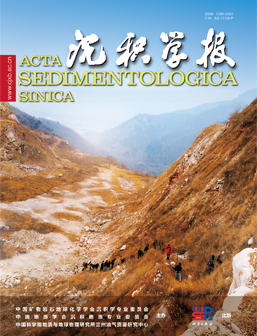Sequential stepwise pyrolysis of Estonian kerogen for Gloeocapsomorpha Prisca research
doi: 10.14027/j.issn.1000-0550.2024.132
- Received Date: 2024-10-28
- Available Online: 2025-03-04
-
Key words:
- oil shales /
- stepwise pyrolysis /
- G. Prisca /
- Kukersite /
- kerogen structure
Abstract: Abstract: [Objective] The Ordovician Kukersite oil shales that composed almost exclusively of Gloeocapsomorpha prisca (G. prisca) alginite are an important set Paleozoic source rocks from Paleozoic around the planet, but they have only been sporadically detected and reported in the Tarim Basin in China. Therefore, rapid identification of G. prisca in source rocks is an important geochemical work. Kerogen can be used to trace the source rock quickly for its enrichment of the parent material of hydrocarbon generation. [Method] Thus the kerogen from Estonian oil shale was analyzed using sequential stepwise pyrolysis with 50 °C intervals from 310 °C to 610 °C to investigate its chemical constitutions. [Results and discussion] The results illustrated that the pyrolyzed hydrocarbons formed upon sequential stepwise pyrolysis are dominated by 5-n-alkyl-1,3-benzenediols probably reflect a major contribution of selectively preserved, highly resistant biomacromolecules from the outer cell walls of G. prisca. It is also characterized by high content of short-chain alkanes, but abnormal high carbon number (>nC29) n-alkane/enes appear at 560 ℃. Besides, the consistent formation of alkyl benzenes, alkyl thiophenes and alkyl ketones also appeared at the middle to high temperature points (460 ~ 560 ℃). All pyrolyzates have the characteristics of lower carbon number, alkyl side chains with a distinct distribution of weak odd-over-even carbon numbers. The extremely abundant and continuous generation of 5-n-alkyl-1,3-benzenediols and its homologues in the pyrolysis products can help to quickly identify whether the source rocks contained G. Prisca or not. In addition, the composition characteristics, product changes and product correlation of the pyrolyzates at different temperatures are helpful for the investigation of kerogen structure. The results of sequential stepwise pyrolysis suggested that the macromolecules of kerogen were formed mainly by polymerization of 5-n-alkyl-1,3-benzenediols in G. prisca. The units in polymer macromolecules including phenol rings, thiophene rings, and normal alkyl chains, are intermolecular connected by C-C and C-O bonds. [Conclusions] The distribution changes of different series of compounds obtained at different temperatures by sequential stepwise pyrolysis can be applied to other organic-rich oil shales, which may reveal the details of algal evolution and determine the various sources of organic matter of kerogen.
| Citation: | Sequential stepwise pyrolysis of Estonian kerogen for Gloeocapsomorpha Prisca research[J]. Acta Sedimentologica Sinica. doi: 10.14027/j.issn.1000-0550.2024.132 |






 DownLoad:
DownLoad: